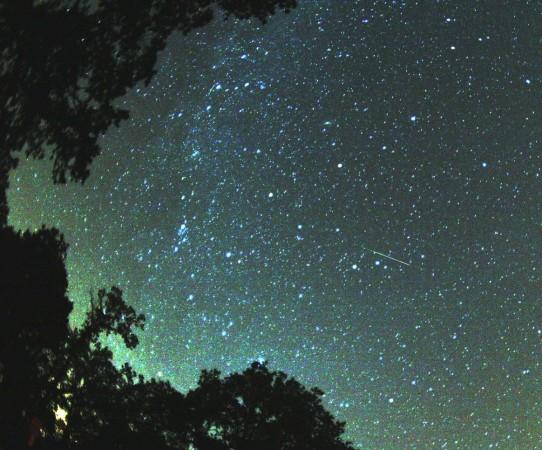
Sky watchers will be treated with another meteor show this year that will beautify the skies on 11 August. However, the shooting stars are expected to peak on 12 and 13 August.
The Perseid meteor shower occurs annually starting from mid-July to mid-August and is one of the biggest and is often considered as the best meteor shower, especially for the people in the Northern Hemisphere.
The Perseids gets its name as the meteors appear to have originated from the constellation Perseus and it occurs as huge comet (Swift-Tuttle) pass through the inner solar system every 133 years and leaves behind debris. When Earth and its atmosphere travels through the trail of dust, fragments of comets hit the atmosphere and burn up as flashes of light at a speed of 140,000 mph. These burning fragments of comets eventually beautify the night skies.
Though the Perseid shower is one of the brightest meteor that occurs annually, this year's meteor shower might be dimmer as another celestial event 'Supermoon' that occurred on Sunday might hinder the view of the shooting stars.
Sunday's Supermoon was the biggest and brightest full moon of the year, which was 14 percent bigger and 30 percent brighter than the usual moon.
While, the Perseid shower is expected to reach its peak on 12 August at 8 pm EDT (5:30 am IST or 1:00 am GMT on 13 August), the bright moon will rise at around 9:30 pm EST on 12 and 13 August (7:00 am IST and 1:30 am GMT on 13 and 14 August), and will shine brightly the rest of the night.
For those sky gazers who cannot view the meteor shower, can watch it live online from NASA webcast. The event will be webcasted from Marshall Space Flight Center from 9:30 pm EDT on 12 August (7:00 am IST or 1:30 am GMT on 13 August).
Though, most of the meteor showers are quite predictable, as it shows up around the same time every year, this is the first time the Supermoon might pose as an obstacle in the amazing sky show.
However, according to NASA, the meteors may be seen despite the supermoon. "The Perseids are rich in bright meteors and so many Perseids will still be seen despite the moonlit sky background. You can minimise the effect of the moonlight by observing with your back to the moon – possibly viewing the Cassiopeia/Cepheus/Ursa Minor area. If possible, keep the moon hidden behind trees or a nearby building." The Guardian quoted Bill Cooke from NASA's meteoroid environment office.
Usually, Perseids generate about 100 to 400 meteors per hour, which can be viewed by observers back on Earth. However, this year from 11-13 August, Perseids are expected to produce at least up to 100 meteors per hour.

















